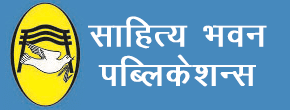भूगोल (Geography) Syllabus For B.A. II Year of Madhya Pradesh Universities
Paper I: Physical Geography (Atmosphere and Hydrosphere)
Unit 1: Weather and climate: Definition and importance. Elements of Weather and climate. Composition of atmosphere, layers of the atmosphere, and their characteristics. Insolation: factors affecting its distribution. Heat balance, Horizontal and vertical distribution of temperature, inversion of temperature.
Unit 2: Atmospheric Pressure: Pressure belts, shifting of Pressure belts, Atmospheric Circulation, Planetary winds, Seasonal and local winds. Jetstream Atmospheric humidity: Absolute, Relative, and Specific humidity. Condensation and its forms, Evaporation, Precipitation. Rainfall—Types and distribution.
Unit 3: Air masses, fronts: origin and classification. Tropical and temperate cyclones and associated weather conditions. Classification of world climate—Koppen, Thornthwaite, and Trewartha. Global climate change. Role and response of man in climatic changes, Applied climatology, and urban climate.
Unit 4: Hydrosphere: Hypsographic curve, Relief of The Pacific, The Atlantic, and The Indian Ocean. Ocean deposits, Coral Reefs, and theories regarding their origin. Concept of Coral bleaching.
Unit 5: Marine temperature, salinity, movements of oceanic water: Waves, Currents, and Tides. Related theories of Tides. Oceans as a source of future resources. Laws of the Sea and Marine pollution.
Paper-II: Economic Geography
Unit 1: Definition and scope of Economic Geography. Sectors of the economy—primary, secondary, and tertiary. Geography of primary production—agriculture production and trade—wheat, Rice, Sugarcane, Tea, Coffee, Cotton, Jute, Wool, Rubber, Fisheries. World economic development: measurement and problem.
Unit 2: Major mineral and power resources: factors affecting exploitation of minerals, world reserve. Production, distribution, and trade of Iron, Manganese, and Bauxite Minerals. Production, world distribution of coal, petroleum, natural gas, hydroelectricity, and atomic energy. Non-conventional energy resources.
Unit 3: Regional Development and Planning: Experience of regional planning in India. Five-year plans, integrated rural development programs, Panchayati Raj and decentralized planning, command area development, watershed management, planning for the backward area, desert, drought-prone, hill, tribal area development.
Unit 4: Manufacturing industries: factors affecting the location. Location, growth, and distribution of iron and steel industry in the United States of America, Russia, Great Britain, Germany and India, aluminum industry—location and distribution in the world, the cotton textile industry in the United States of America, Great Britain, China, Japan and India—growth and distribution, woolen textile industry—location and world distribution, petrochemical industry-world distribution, fertilizer industry-world distribution.
Unit 5: Transport: the relative significance of different means of transport, factors affecting land, water, and air transport, world oceanic routes, canals, and rail routes. Changes in the world economy context of globalization.
Paper III: Practical
Unit 1: Weather maps: Preparation of weather maps in India. Weather symbols, Interpretation of weather maps published by Indian Metrological Department for Summer, Winter, and Monsoon Seasons.
Unit 2: Use of Metrological instruments—Maximum and Minimum Thermometer, Dry and Wet bulb thermometer, Aneroid Barometer and Rain Gauge, Wind vane, Anemometer, Fortin’s Barometer.
Unit 3: Classification of Indian Metrological Observatories and Methods of Collection of Metrological Data.
Unit 4: Diagrammatic representation of Climatic Data–Line Graph, Polygraph, Climograph, and Hythergraph.
Unit 5: Prismatic Compass Survey—Open and Closed Traverse Type of Bearings, Correction of Bearings, and Correction of Closing Error by Bowditch Method.
















![समाजशास्त्र (Sociology) [for L.N. Mithila University, Darbhanga]](https://i0.wp.com/sahityabhawanpublications.com/wp-content/uploads/2017/11/2160-Sociology.jpg?resize=245%2C300&ssl=1)


![समाजशास्त्र (Sociology) [for Various Universities of Chhattisgarh]](https://i0.wp.com/sahityabhawanpublications.com/wp-content/uploads/2017/10/2668-Sociology.jpg?resize=245%2C300&ssl=1)
![समाजशास्त्रीय सिद्धान्त (Sociological Theories) [for H.N.B. Garhwal Unviersity, Srinagar]](https://i0.wp.com/sahityabhawanpublications.com/wp-content/uploads/2017/10/2789-Sociology-Theories.jpg?resize=245%2C300&ssl=1)

Reviews
There are no reviews yet.